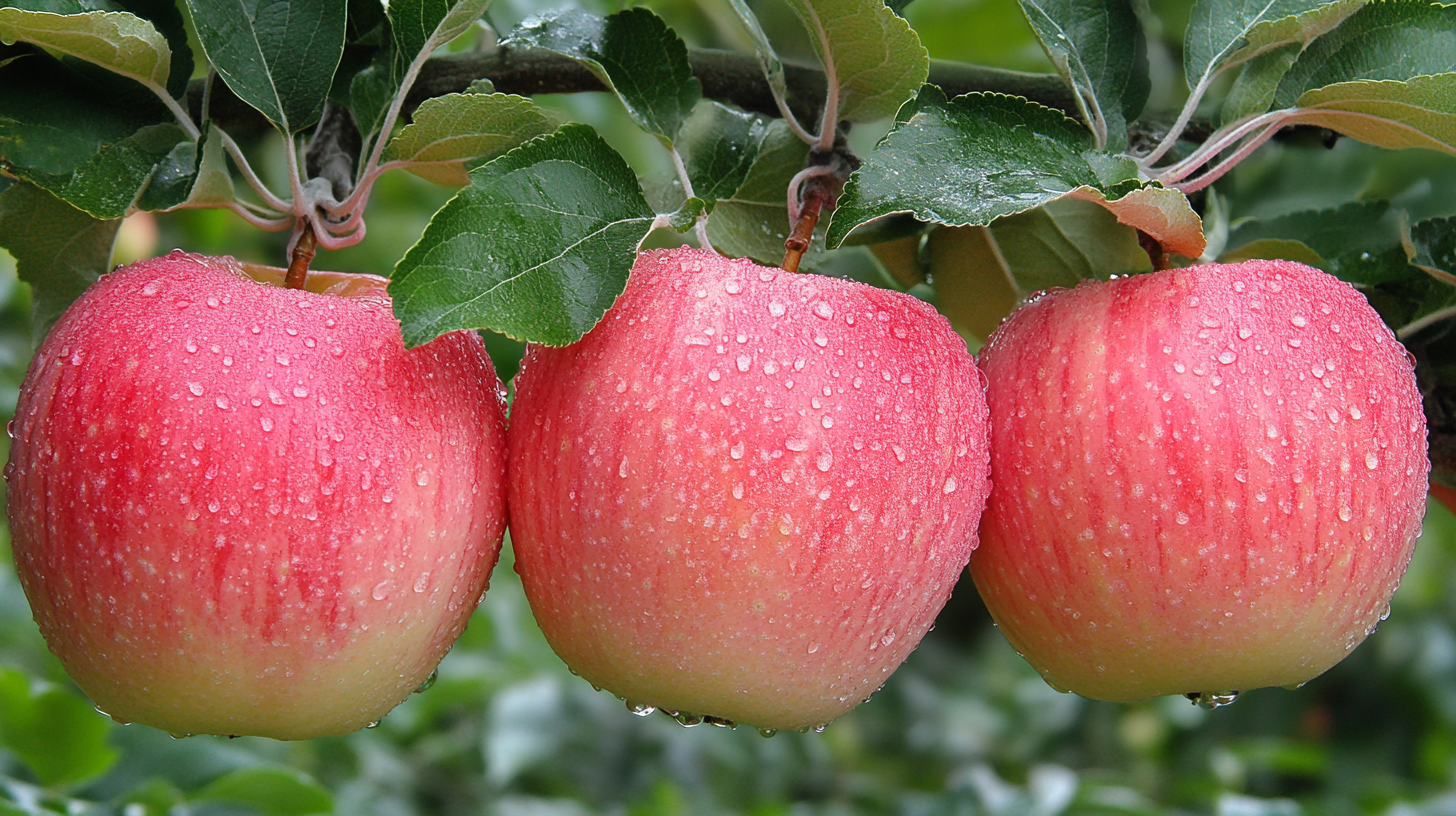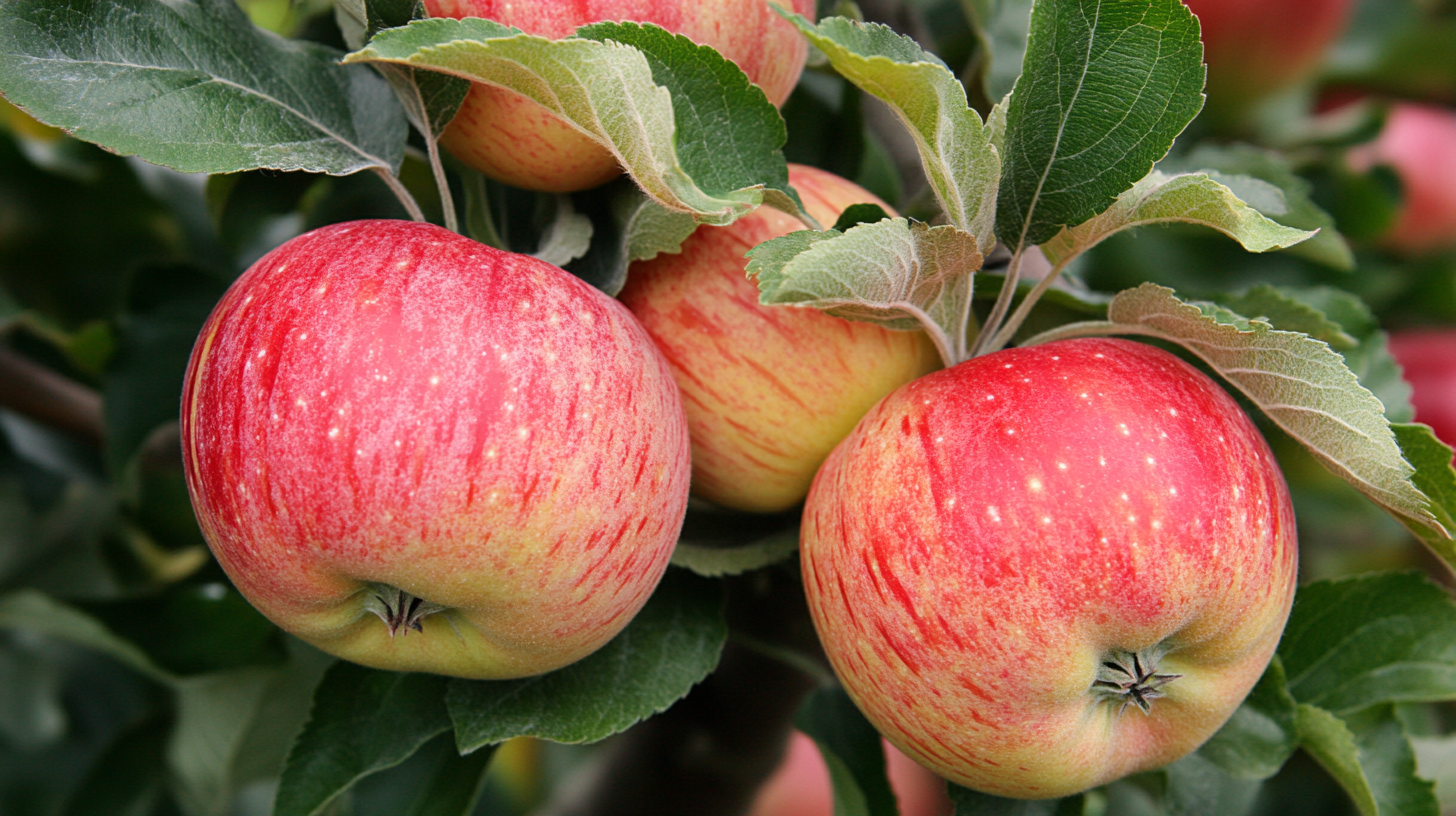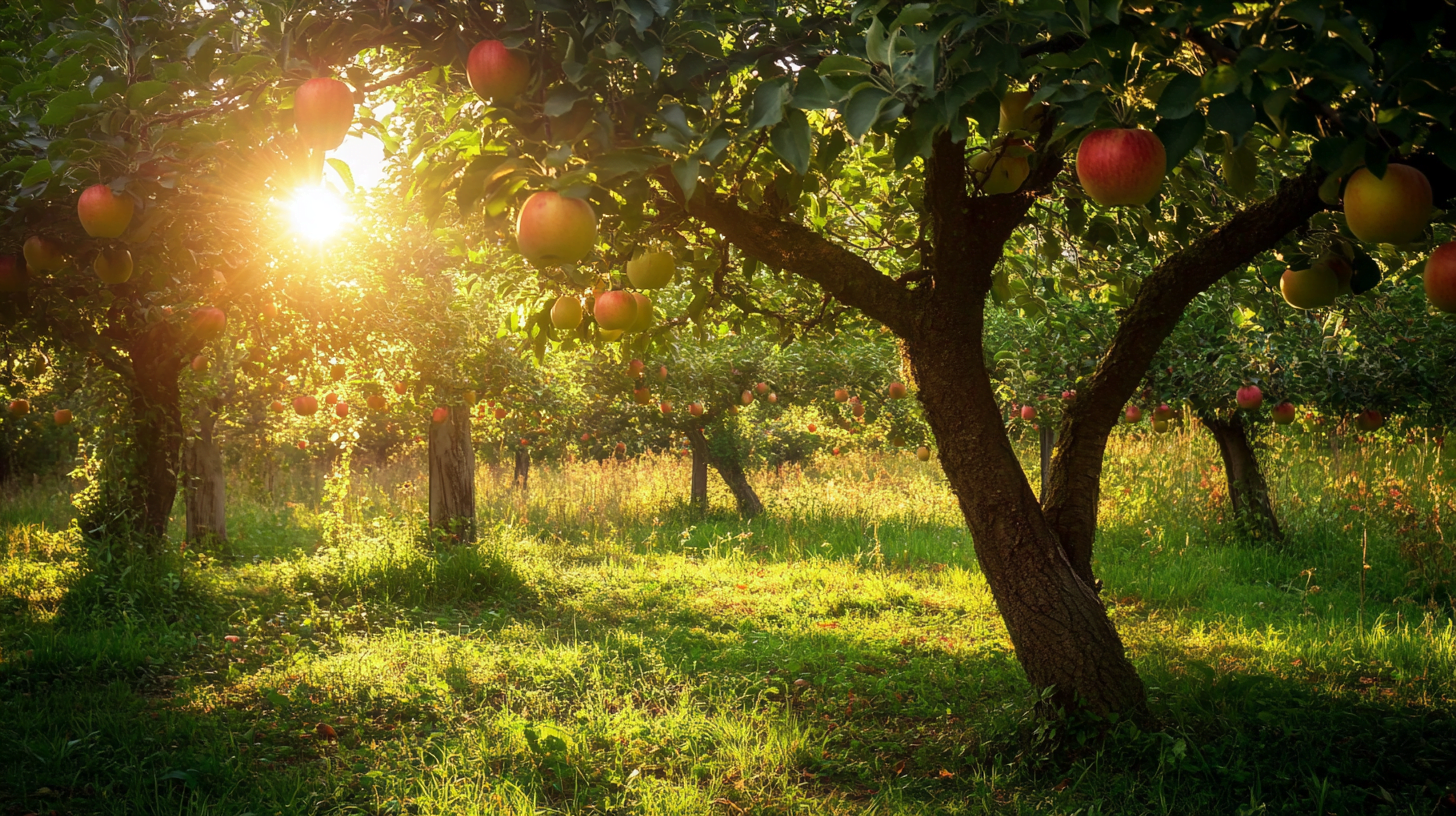Beautiful Plants For Your Interior
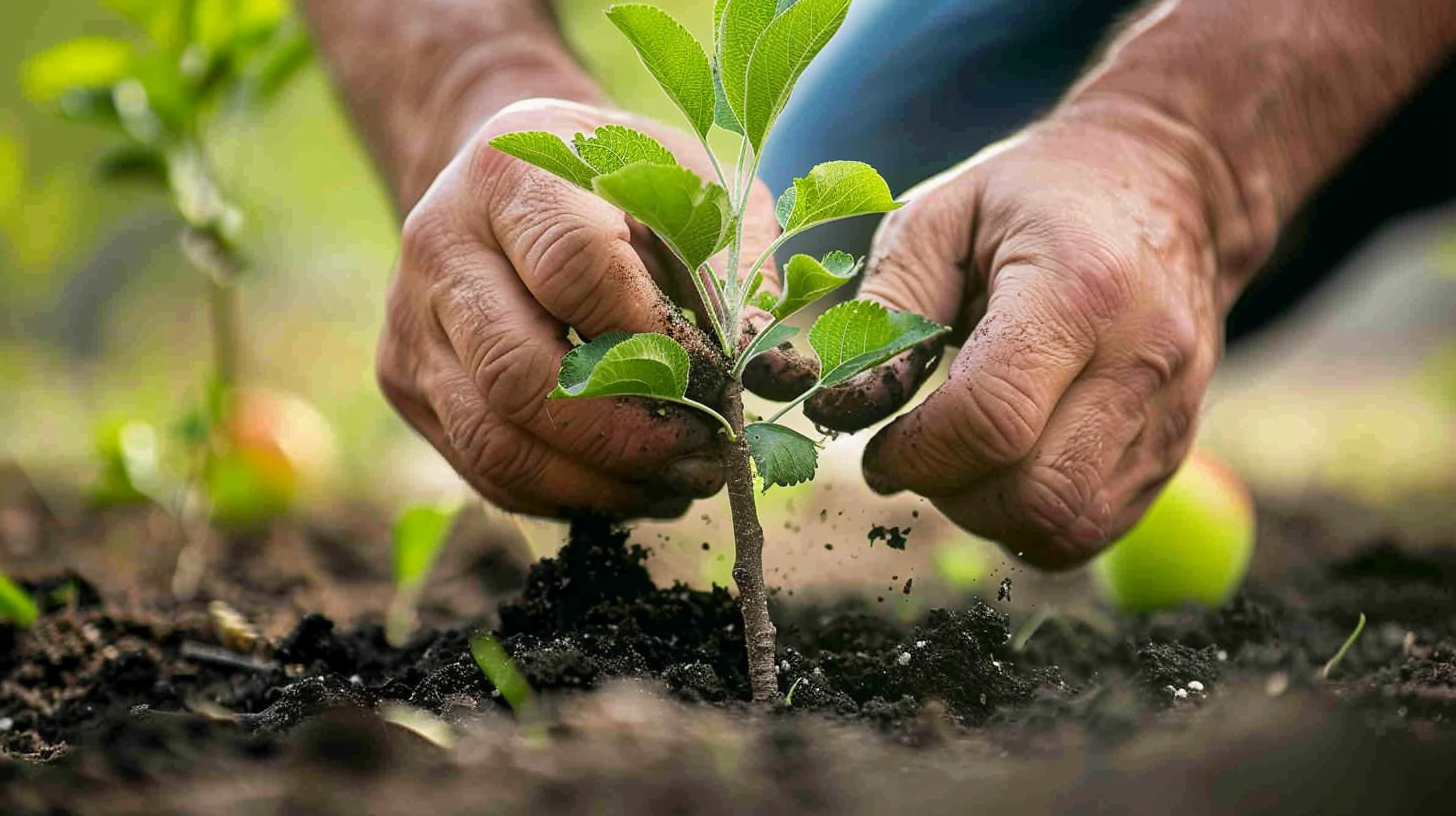
Table of Contents
Planting Apple Trees
The journey to a bountiful apple harvest begins with the planting of the apple trees. This stage is foundational to the future health and productivity of the orchard. The choices made during this phase regarding variety and location can make a significant difference in the ease of care and the quality of fruit produced.
Selecting the Right Apple Tree Variety
Choosing the appropriate variety is essential for the success of your apple trees. It is recommended to research and purchase apple tree varieties that are resistant to diseases such as apple scab, fireblight, and powdery mildew. Selecting disease-resistant varieties can significantly ease the process of growing healthy and productive apple trees. For detailed information on various types of apple trees, including dwarf apple trees, visit our comprehensive guide on apple tree varieties (Orchard People).
Sunlight and Location Considerations
Apple trees thrive best with full sun exposure, requiring at least six to eight hours of direct, unfiltered sunlight each day. This is crucial for the trees to grow properly and to ensure a fruitful yield. Neglecting this need may lead to subpar fruit production or even a complete absence of fruit. For tips on measuring sun exposure in your yard, refer to Epic Gardening’s article on the subject.
| Exposure Type | Hours of Sunlight | Potential Issues |
|---|---|---|
| Full Sun | 6-8+ hours | Optimal for growth and fruiting |
| Partial Sun | Less than 6 hours | Poor fruit yields |
| Excessive Sun | Extreme heat/cold conditions | Sunburn or sunscald |
However, it’s important to note that under extremely hot or cold conditions, apple trees can receive too much sun, leading to issues like sunburn and sunscald. Sunburn typically manifests as reddish-brown discoloration at the tree trunk’s base, whereas sunscald is characterized by elongated areas of dead bark, often on the south or southwest side of the trunk.
To mitigate these risks, Washington State University suggests painting young apple tree trunks and lower branches with white latex paint, or wrapping them with reflective material. If your tree is already affected, wrapping the trunk with a light-colored material can help the tree heal without sustaining further damage.
Ensuring proper sunlight and location for your apple trees not only influences immediate growth but also sets the stage for future apple tree blossoms and fruit production. By taking these considerations into account, gardeners can look forward to the rewarding experience of nurturing their apple trees from planting to harvest.
Caring for Young Apple Trees
Proper care in the initial years after planting is crucial for the overall health and productivity of apple trees. This care includes regular watering, appropriate fertilization, and diligent pruning to encourage healthy growth and eventual fruit production.
Watering Needs of Young Apple Trees
Young apple trees require consistent and deep watering to establish strong root systems. The frequency and amount of water needed can vary based on soil type and environmental conditions. Orchard People recommend frequent watering, especially during the tree’s first growing season. As the tree matures, the need for watering decreases, but it is still important to maintain a regular watering schedule during dry spells.
| Tree Age | Watering Frequency | Watering Depth |
|---|---|---|
| First Year | Weekly | 6-12 inches |
| Second Year | Every 10 days | 12-18 inches |
| Third Year+ | As needed during dry periods | 18-24 inches |
Fertilizing Apple Trees
To support the growth and health of young apple trees, apply a nutrient-rich mulch annually in early spring. This provides essential nutrients and minimizes the risk of damage that can occur with synthetic fertilizers. Orchard People suggest that for beginners, mulch is the best option to fertilize apple trees. It is important to avoid fertilizing late in the season as this can promote new growth that may be damaged by early frosts.
Pruning Techniques for Healthy Growth
Pruning is vital for maintaining tree health, shaping the tree, and preventing disease. It is especially important for organic growers as it helps to keep trees healthy without excessive chemical sprays. The best time to prune is during the dormant season, which is late winter to early spring, before apple tree blossoms appear. Orchard People provide guidance on pruning techniques that can help with tree structure and air circulation, which are key to reducing disease risk.
| Pruning Goal | Technique |
|---|---|
| Remove dead or diseased branches | Cut back to healthy tissue |
| Improve structure and balance | Thin out competing branches |
| Enhance sunlight penetration and air flow | Open up the tree’s canopy |
For detailed pruning instructions and methods, visit our guide on pruning apple trees. Properly caring for young apple trees sets the foundation for a bountiful harvest in the years to come. It involves understanding the tree’s needs for water, nutrients, and structure, which are all crucial elements for successful growth. Remember to consider the specific requirements of your selected apple tree varieties and whether you are growing standard or dwarf apple trees when implementing these care practices.
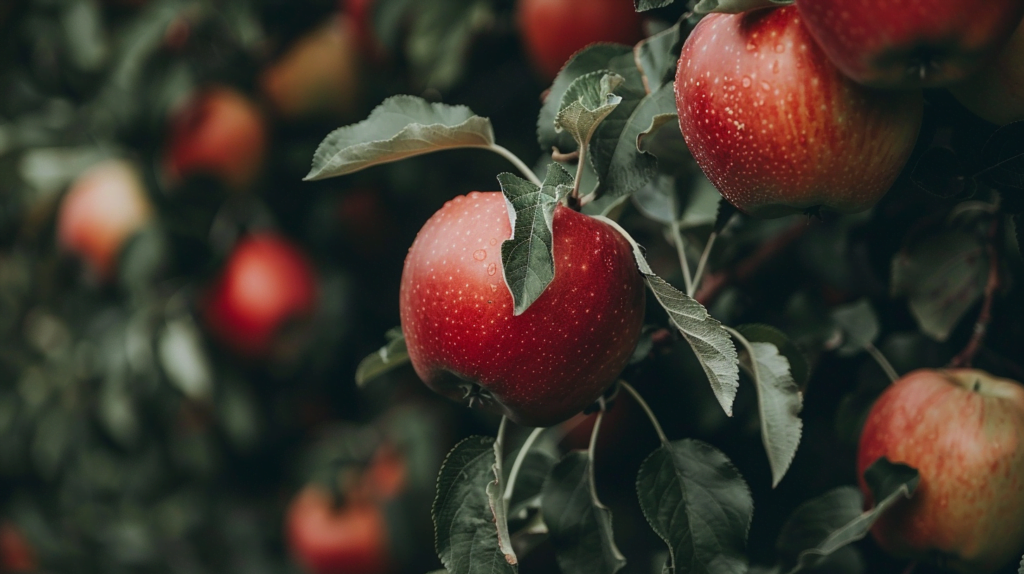
Apple Tree Maintenance
Maintaining apple trees is essential for a healthy and bountiful harvest. Part of this maintenance involves proactive steps to prevent pests and diseases, as well as recognizing and addressing common tree issues.
Preventing Pests and Diseases
Apple trees are susceptible to a variety of pests and diseases that can impact their health and fruit production. To minimize the occurrence of these problems, consider planting disease-resistant varieties such as ‘Prima’, ‘Priscilla’, ‘Liberty’, and ‘Freedom’ which require less intervention for diseases like apple scab and cedar-apple rust (Almanac).
Pest management is also crucial. Apple maggots, plum curculios, and codling moths are just some of the pests that can afflict apple trees. Employing targeted pest control measures can reduce the need for broad-spectrum insecticides. For example, raking and burying fallen leaves under mulch and using horticultural oils can help control insect populations (Almanac).
To prevent diseases, ensure good air circulation by pruning apple trees regularly, which also promotes growth and fruit production. Additionally, consider the following table for specific pest and disease prevention strategies:
| Pest/Disease | Prevention Strategy |
|---|---|
| Fire Blight | Prune infected parts, apply antibiotic sprays |
| Powdery Mildew | Use sulfur or myclobutanil fungicides, prune affected twigs |
| Codling Moth | Thin fruits, remove infected fruits, bag fruits, timed insecticide sprays |
| Crown Rot/Root Rot | Improve drainage, cultivate soil, avoid over-irrigation |
Recognizing Common Apple Tree Issues
Early recognition of common apple tree issues can help in taking timely action to prevent further damage. Here are some symptoms to watch for and their potential causes:
- Fire blight causes the death of blossoms, twigs, and limbs, and sometimes entire trees, especially in moist conditions with temperatures over 60°F. (Source)
- Powdery mildew presents as a white powdery growth on leaves, reducing the vigor of the tree if the infection is severe. (Royal Horticultural Society)
- Codling moths lay eggs on fruits, which can lead to worm-infested apples, and they can have multiple generations per season. (Source)
- Crown rot and root rot are caused by Phytophthora and can be indicated by poor growth or dieback. Good cultural practices can prevent these diseases. (Source)
- Iron deficiency, indicated by yellowing leaves with green veins, is exacerbated by high soil pH and can be treated with chelated iron applications. (Source)
- Lichen on shoots may indicate low vigor, which can be improved with winter pruning and proper feeding. (Royal Horticultural Society)
- Apple scab leads to greenish-black spots on leaves and early leaf drop. (Royal Horticultural Society)
By staying vigilant and applying the proper care techniques, you can ensure that your apple trees remain healthy and productive. Regular maintenance, coupled with an understanding of the signs of distress, will help your trees thrive and yield a plentiful harvest. Explore apple tree varieties to find the best options for your orchard, and consider dwarf apple trees for smaller spaces. Remember to appreciate the beauty of apple tree blossoms as a sign of a fruitful season ahead.
Harvesting and Storage Tips
Reaping the fruits of one’s labor is a rewarding aspect of growing apple trees, but knowing when to harvest and how to store apples properly can make all the difference in enjoying a bountiful and tasty harvest. This section will guide homeowners on the best practices for harvesting apples at the peak of ripeness and the most effective storage methods to maintain their quality and freshness.
Harvesting Apples at the Right Time
Timing is crucial when it comes to picking apples. Apples should be picked when they are fully mature but not overripe to ensure the best flavor and texture. Here are some indicators to help determine the right time for harvesting:
- Color Change: The apple’s background color will shift from green to gold as it matures (Almanac).
- Taste Test: A balance of sweetness and tartness and a crisp texture indicate readiness.
- Ease of Separation: Apples that come off the tree easily with a gentle twist and have dark brown seeds are usually ripe.
- Pre-Frost: Harvest before the first frost to prevent damage to the fruit.
To learn more about the different apple tree varieties and their specific ripening times, visit our detailed guide.
Proper Storage Methods for Apples
After harvesting, proper storage is essential to extend the shelf life of apples. To maintain their quality and freshness, follow these storage guidelines:
- Temperature: Keep apples in a cool, dark, well-ventilated area at 30-32 degrees F (-1 to 0 C).
- Separation: Store apples away from other produce to avoid the effects of ethylene gas, which accelerates ripening and spoilage (Epic Gardening).
- Inspection: Regularly check for any signs of rot or decay and remove compromised apples to prevent the spread to healthy ones.
| Storage Method | Temperature | Expected Shelf Life |
|---|---|---|
| Refrigerator | 30-32 degrees F (-1 to 0 C) | Up to 6 months |
| Cool, Dark Place | 30-32 degrees F (-1 to 0 C) | Varies by variety |
For additional information on how to keep your apples fresh for longer, explore our article on proper storage methods for apples, and consider learning about dwarf apple trees for smaller garden spaces.
By adhering to these harvesting and storage tips, homeowners can enjoy the delicious fruits of their apple trees long after the harvesting season has passed. Remember to also keep up with regular pruning and care to ensure the health and productivity of your apple trees.
Best Practices for Successful Growth
Achieving a bountiful harvest from apple trees involves more than just planting and waiting. It requires understanding the intricacies of the tree’s needs and meeting them effectively. Two crucial aspects of this are ensuring proper cross-pollination and maintaining the right soil pH and fertilization.
Cross-Pollination and Apple Tree Planting
Most apple trees are not self-pollinating; they require pollen from another apple tree variety for fertilization. This process of cross-pollination is often facilitated by bees, which are essential pollinators in the apple orchard. To promote a healthy bee population, it’s important to avoid or minimize the use of broad-spectrum insecticides that can harm these beneficial insects (Almanac).
Certain apple tree varieties, including disease-resistant ones like ‘Prima’, ‘Priscilla’, ‘Liberty’, and ‘Freedom’, are known for their lower susceptibility to common diseases like apple scab and cedar-apple rust. These varieties can reduce the need for frequent spraying and are a good choice for home orchards (Almanac). Additionally, each variety has specific pollination partners and chill hour requirements that are essential for fruit production. Homeowners should research the requirements for their chosen apple tree varieties to ensure they plant compatible trees within proximity for successful cross-pollination.
Soil pH and Fertilization Guidelines
The best soil environment for apple trees is slightly acidic, with an optimal pH range of 6.0 to 6.8. Before planting, it is wise to conduct a soil test, either through a Cooperative Extension agent or with an at-home testing kit available at most garden centers. This will help determine if any soil amendments are necessary to adjust the pH to the ideal range.
Fertilization should be approached with care, as applying fertilizer directly into the planting hole can harm the young roots. Instead, fertilizer should be applied around the tree after planting, and subsequently, according to the growth stage and the tree’s needs. The timing and amount of fertilizer application play a crucial role in the tree’s health and fruit production.
For those interested in learning about pruning, which is essential for the tree’s health and fruit quality, visit our guide on pruning apple trees. Pruning helps shape the tree, encourages new growth, and ensures good air circulation within the canopy. Proper watering, especially during the first year, is also critical for establishing a strong root system. Depending on the soil type, the frequency and amount of watering will vary, but the goal is to provide at least one inch of water each week (Plant Me Green).
By following these best practices and considering factors such as cross-pollination and soil conditions, you can set the stage for your apple trees to thrive and produce an abundant harvest. Whether you’re growing standard or dwarf apple trees, paying attention to these details will contribute to the success and longevity of your apple orchard.
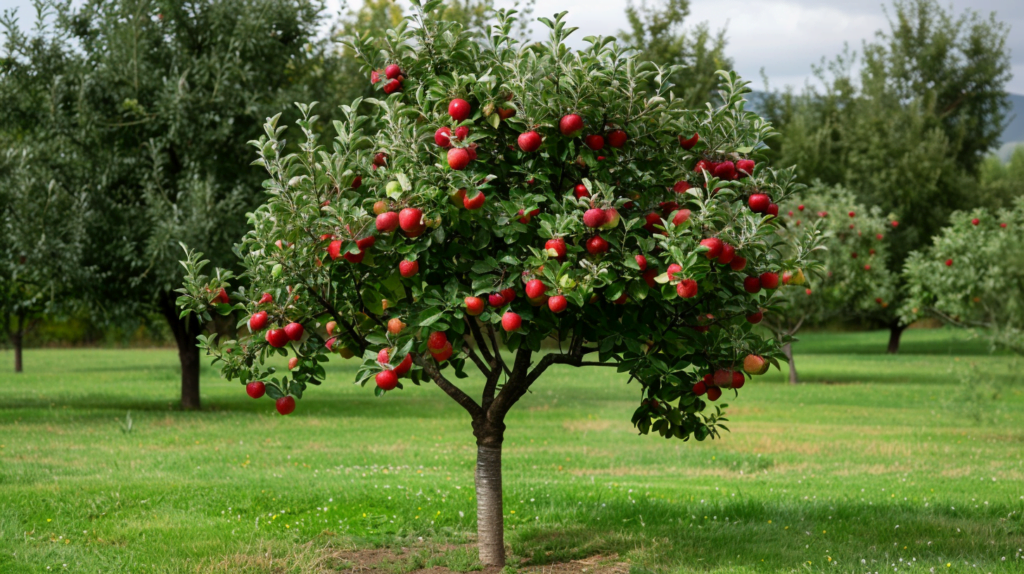
Planting Time and Tips
Knowing when and how to plant apple trees is essential for establishing a robust orchard that will yield abundant harvests in the years to come. Timing is critical, and certain precautions must be taken into account, especially when considering various planting zones.
Optimal Times for Planting Apple Trees
For most parts of North America, spring is the most favorable time to plant new apple trees. The specific month for planting will vary depending on the location, with considerations given to the local climate and soil conditions. In regions with warmer climates, classified as zones 7 and above, fall planting is also an option, typically around the end of November. However, it’s only advisable if winter temperatures do not drop much below freezing. If there’s any concern about harsh winter temperatures, spring planting is the safer choice to ensure the young trees aren’t damaged by cold weather (Orange Pippin Trees).
| Zone | Optimal Planting Time |
|---|---|
| Zones 7+ | Late November (Fall) |
| Other Zones | Spring (As soon as ground thaws) |
The condition of the ground, rather than frost dates, dictates the ideal planting time. Planting is not possible when the ground is frozen solid but should commence as soon as it begins to thaw. Fruit trees, including apple varieties, are produced on an annual cycle and harvested in late fall. Therefore, summer is the best time to order your trees, ensuring that you have access to a wide selection of apple tree varieties and sizes, and are ready to plant the following spring.
Precautions for Fall Planting in Different Zones
While fall planting may be suitable for warmer zones, it comes with risks. For instance, in zones with unpredictable or typically cold winters, fall planting can lead to damage from freezing temperatures, potentially harming or killing young trees. Therefore, companies like Orange Pippin Trees typically supply trees only in the spring to avoid the risks associated with fall planting (Orange Pippin Trees). Additionally, in zones such as zone 4, where the growing season is shorter, it’s important to order trees over the summer, as by May, it may be too late to plant due to limited availability and the approaching end of the season.
When considering fall planting, it is crucial to ensure that the young trees have enough time to establish their root systems before the onset of winter. Gardeners should also mulch around the base of the tree to provide extra insulation against cold temperatures and consider using tree guards to protect against frost and animal damage.
| Zone | Fall Planting Considerations |
|---|---|
| Zone 4 | Order by summer, too late by May |
| Warmer Zones | Ensure root establishment before winter |
In conclusion, the optimal time for planting apple trees and the necessary precautions vary depending on your location and climate zone. By planning ahead and adhering to these guidelines, you can give your apple trees the best start possible, paving the way for a bountiful harvest in the future. Explore more tips and techniques for pruning apple trees and caring for dwarf apple trees to enhance your orchard’s success. Additionally, learn about the beauty of apple tree blossoms and how they signal the start of the growing season.
